

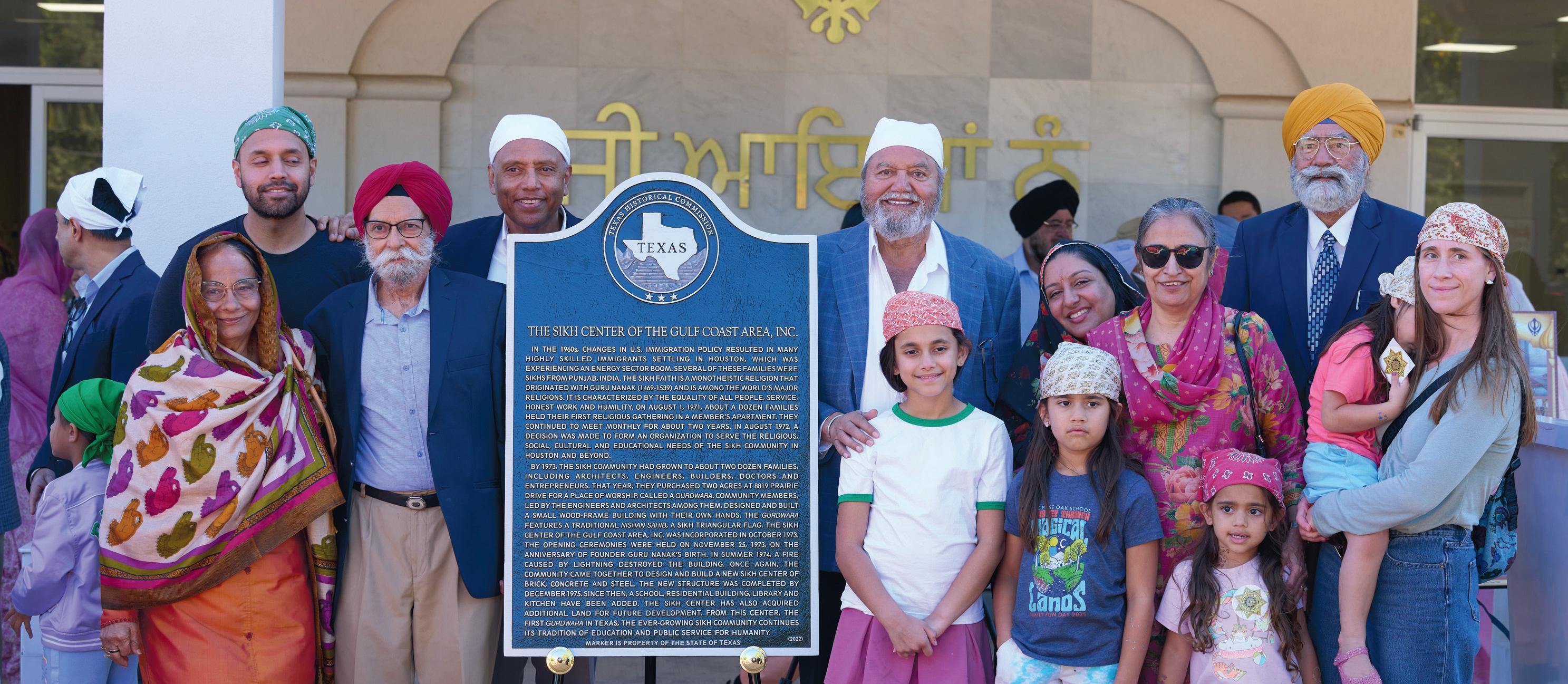
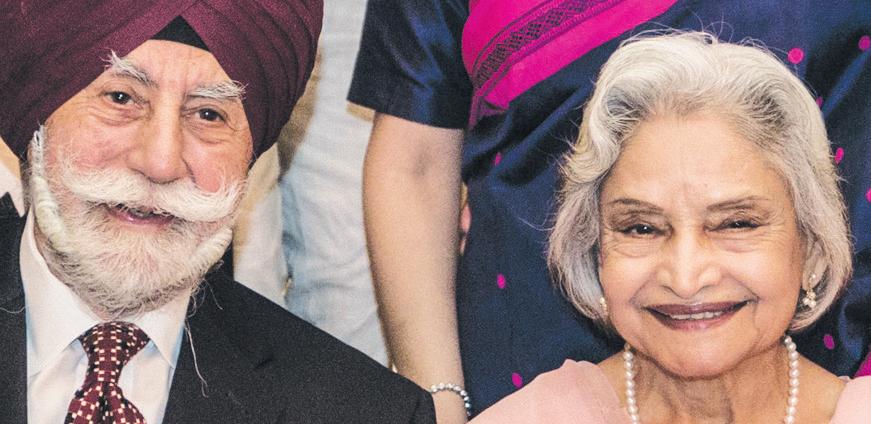
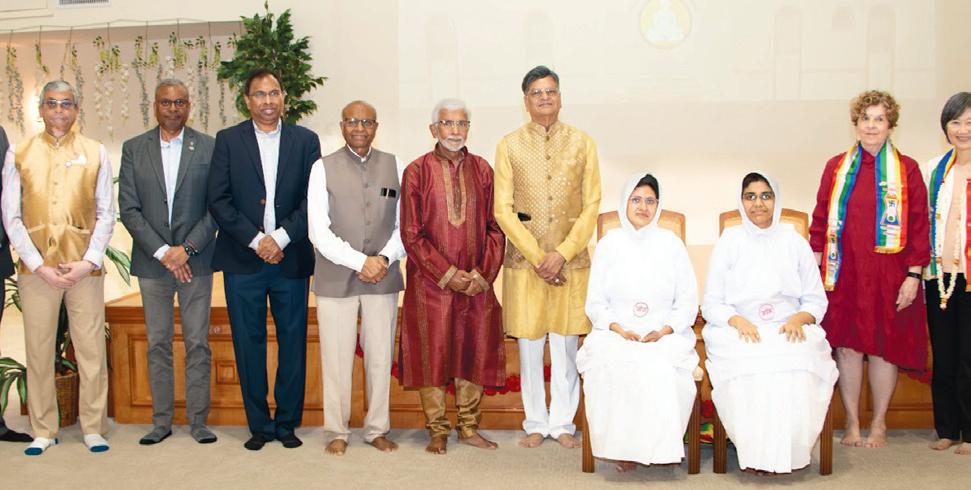
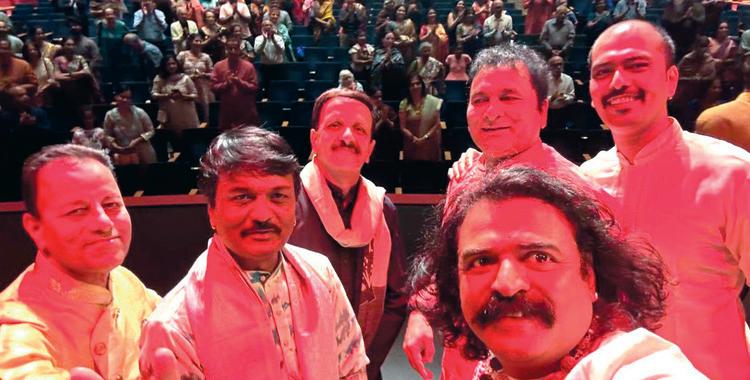



November 21, 2025










November 21, 2025
By Jawahar Malhotra
houston: The skies were crystal clear blue and the sunshine was crisp as over 200 congregants of the Sikh Center, their invited guests and dignitaries assembled on chairs in the front courtyard of the Gurdwara to mark the unveiling of a plaque officially designating the place as a Texas Historical Site.
The event on Sunday, November 9, was emceed by Manpreet “Monica” K. Singh, Judge of the Harris County Civil Court at Law No. 4 who, in 2023 became the first Sikh judge elected in the US. It began with a prayer of benediction by Bhai Jasvinder Singh and the congregants in Punjabi, translated into turned to English by Dr. Kiran Kaur, and followed by the US national anthem played on a violin by the young Harleen Kaur.
Amrik Singh Nijjar, President of the Sikh Center, welcomed everyone and gave a brief history of the Gurdwara.
The Sikh Center was established in 1972 with about a dozen pioneering Sikh families who gathered for religious and spiritual occasions. After some time, they realized that they needed a community place of worship – a gurdwara – of their own. They found a vacant lot on 8819 Prairie Drive and decided to build a place of worship in August 1973.
A modest wooden Gurdwara building was inaugurated in November 1973 on Parkash Purab of Guru Nanak. An unfortunate lightning strike burnt the structure to the ground in 1974, but the sangat quickly rebuilt the Gurdwara back. Since then, it has had several improvements culminating in a major upgrade with an extension in 2019. The Sikh Center History & Souvenir Book was published


was an important part of Texas history and was a candidate for inclusion into the Historical Landmarks Registry. He explained the hurdles he faced and the people who assisted (some were attending the event) and how finally the placement of the plaque was approved.
Monica K. Singh lent a personal touch, relating how her father immigrated to the US in the early 1970s, and how she was born and raised in this Gurdwara. She acknowledged the dignitaries who attended and asked Bobby Singh, a key member of the Gurdwara to introduce them.
Among those attending were State Rep. Gene Wu; Harris County Sherriff Ed Gonazales; Councilman Julian Ramirez, representing Houston Mayor John Whitmire; former Houston Mayor Annise Parker; representatives of County Commissioners Leslie Briones, Rodney Ellis, State Sen. Molly Cook an State Re. Lacey Hall; and the Harris County Historical Society. Later they spoke and read proclamations, including ones from Gov. Greg Abbott and Harris County Judge Lina Hidalgo. Gene Wu declared that “the Sikh community is important …. because they are warriors who defend justice.”
Bobby Singh acknowledged the support of the founding families by asking them to stand and be recognized and noted that he himself has been coming to the Gurdwara for 43 years. He also acknowledged the key role that the Harris County Sherrif’s office had in allowing Sikhs to join with their articles of faith and the massive funeral for slain Deputy Sandeep Singh Dhaliwal and the re-naming of part of the Beltway near the Sikh National Center in his honor.
Commissioners.

Founder: dr. K.l. sindwani
PuBlisher: Jawahar Malhotra
editor: PraMod KulKarni
CorresPondent: sanChali Basu in December 2023 at the 50th Anniversary celebration, which was attended by the later former Hous-

By Jawahar Malhotra
sugar land: It was only five years ago in 2020 that Kanwal and Raj Bhalla made donations totaling a million dollars to many of their favorite charities which had been impacted by the Covid pandemic. That same year, they surprised the Houston Methodist Hospital Foundation, with an unexpected gift of $500,000 from a total stranger.
Two years later, at a reception held on November 9, 2022 at the Brazos Pavilion Conference Center at the Houston Methodist Sugar Land Hospital, Hospital executives showed their appreciation in front of over 70 guests - family and friends – of the Bhallas.
A plaque bearing the picture of the Bhallas and a description of their generous gift, was unveiled in the lobby of the newly renamed Bhalla Main Pavilion, and the new name was attached to the outside top edge of the port cochere.
Dr. Rajinder Pal Singh Bhalla, a veterinarian in the Indian Army, first came to the US in 1960 for a year of study and then went returned to India. After he retired from the Army, he and his wife came back with their two young boys to settle in Long Island, New York. Raj went to work at Charles River Labs in Port Washington, Long Island while Kanwal owned and operated an Indian restaurant called Paul’s Mughlai for ten years.
Twenty two years ago, Raj was

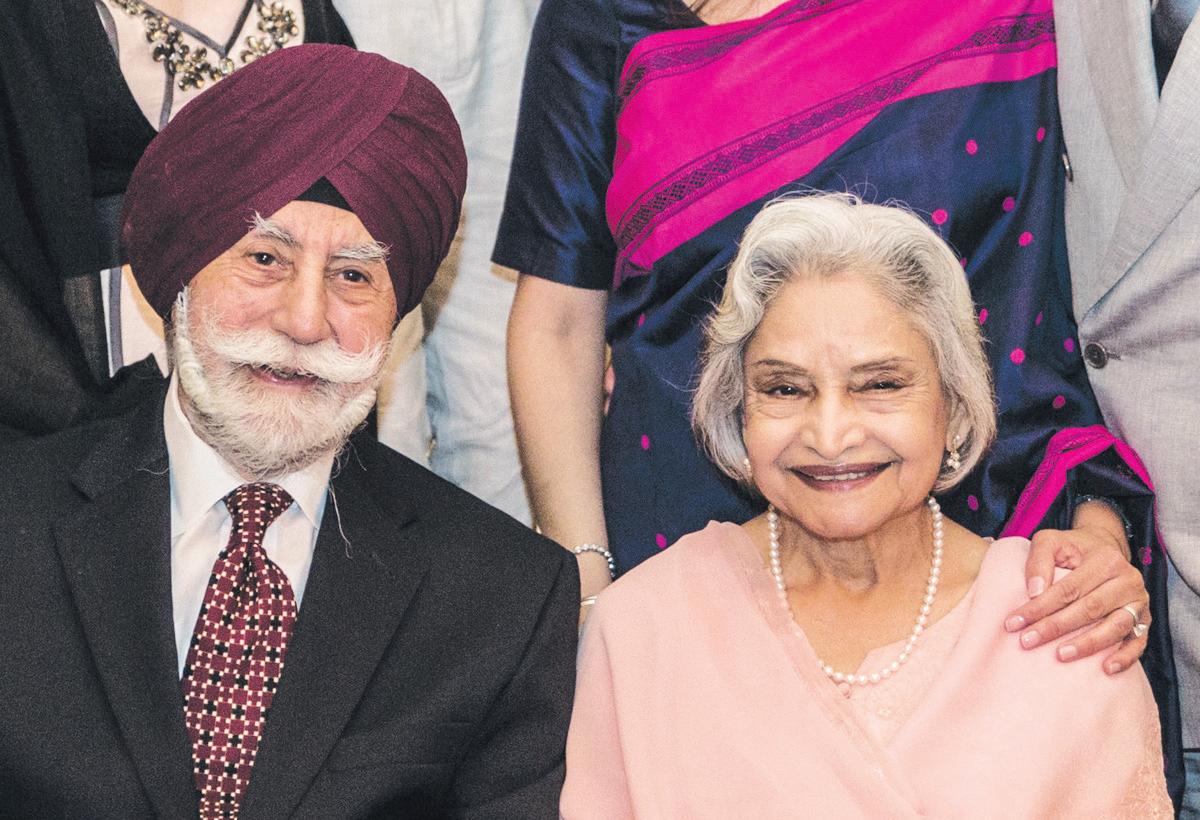
transferred to Houston and the Bhallas later retired in Sugar Land where they have become an integral part of the South Asian community, participating in many functions and activities.
Now, almost to the day, three years later, Kanwal and Raj Bhalla have made another outright gift of $500,000 to The Methodist Hospital Foundation to establish the Gurpreet S. Bhalla MD Memorial Cancer Innovation Endowment at Houston Methodist Sugar Land Hospital, in loving memory of their late son. The gift was matched with $500,000 from Inspire Challenge, making the Endowment a cool million dollars.
Distributions from the Endowment will support innovative initiatives in education, research and
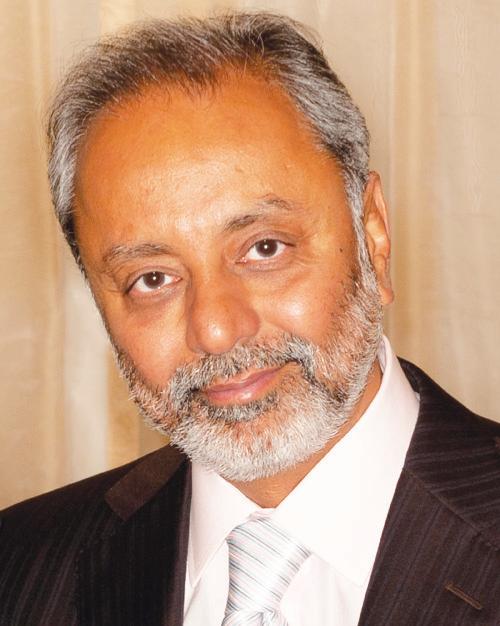


needville, tX: On Nov 16th, 2025, Texas State residents joined hands as dedicated volunteers of the global non-profit organization Dr. Shri. Nanasaheb Dharmadhikari Pratishthan (DSNDP), undertaking a Adopt-A-Highway cleanup drive in collaboration with the Texas Department of Transportation at FM 361/FM 1994 up to Seller Rd, Needville, Fort Bend County, Texas 77461
This cleanliness drive by DSNDP drew 10 volunteers at Fort Bend County who collected 14 bags of trash resulting in collection of around 210 pounds of waste.
In alignment with the motto “Vasudhaiva Kutumbakam” (The world is one family), DSNDP aims to foster a brighter future by advocating for cleanliness drives in collaboration with the US government by undertaking nationwide cleanliness drives since July 2022.
These activities are executed under the guidance of the founders of the organisation Dr. Shri Appasaheb Dharmadhikari and Dr. Shri Sachindada Dharmadhikari.
Earlier in Texas, the organization also carried out 39 cleanliness activities that includes Adopt-aRoad, Adopt-a-Highway, Storm Drain marking etc. across 8 cities involving a total of 563 volunteers who worked for around 889 volunteer hours, collected 330 bags of waste resulting in approx. 4950 pounds of trash.
Within the North America continent, DSNDP continues to col-

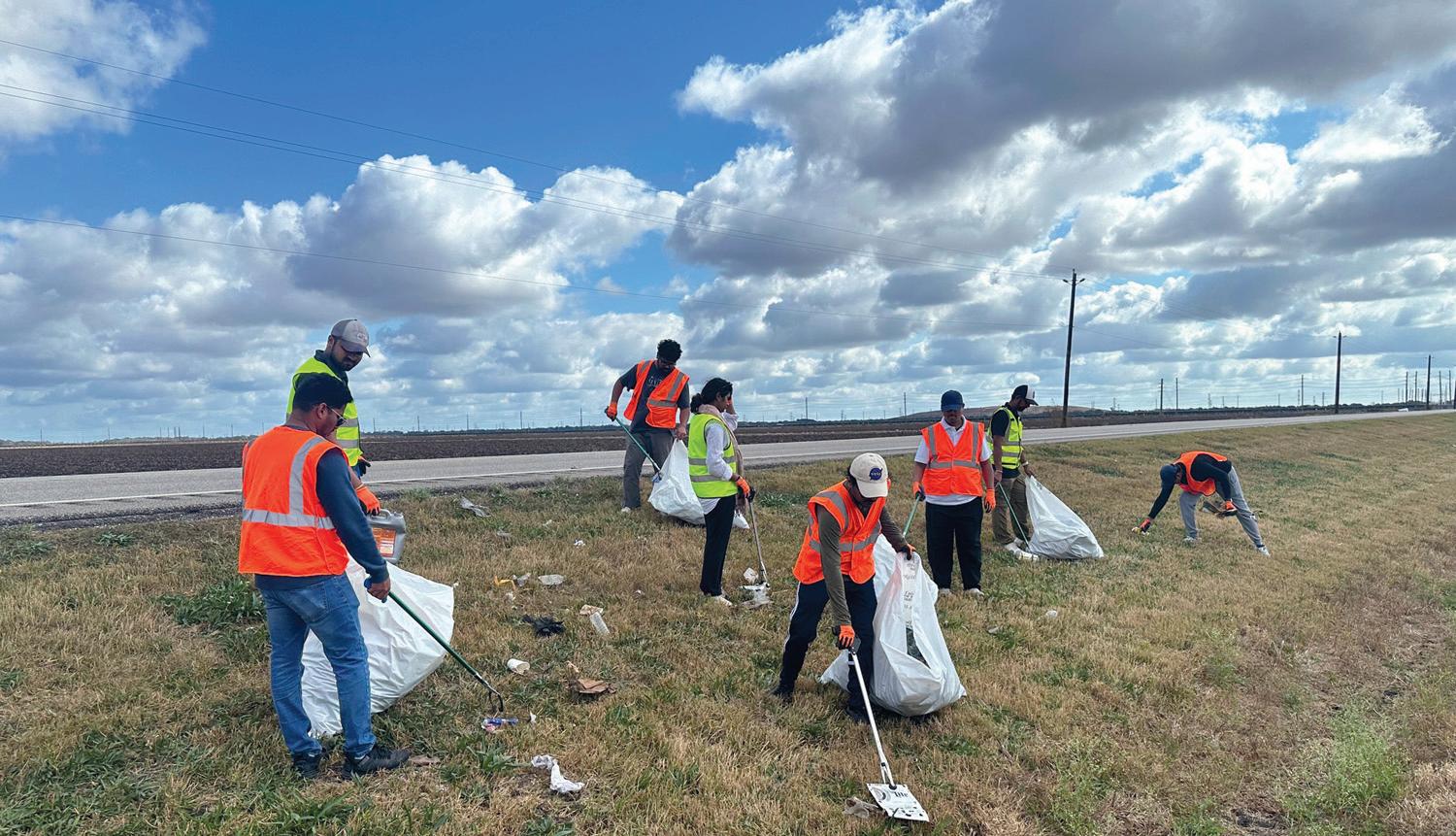
laborate with 19 states and 80 cities across the United States for nationwide cleanliness drives including 27 different programs such as Adopt-Highway/Park/ Beach/ Street/ River etc. During these cleanliness drives, DSNDP has successfully engaged 4128 volunteers, actively collecting 62670 pounds of trash, resulting in significant cost savings for the government.
The organization has received accolades from various state and county governments in the form of 67 certificates and 97 signboards within the nation.
The organisation is actively involved in tree plantation and conservation across 15 states and 37 cities within the US. DSNDP also leads health initiatives such as the Women’s Cancer Awareness Conference that was successfully hosted in 2023, and numerous blood/ plasma donation drives in Canada and the United States in recent years.
DSNDP organized large-scale environmental initiatives in 2024 to celebrate Earth Day. In 2025, DSNDP marked the milestone of 500 Green Initiatives across the United States and Canada, uniting over 300 volunteers who collected nearly 2400 pounds of trash, further advancing efforts in environmental conservation.
For more information, please visit https://www.dsndp.com

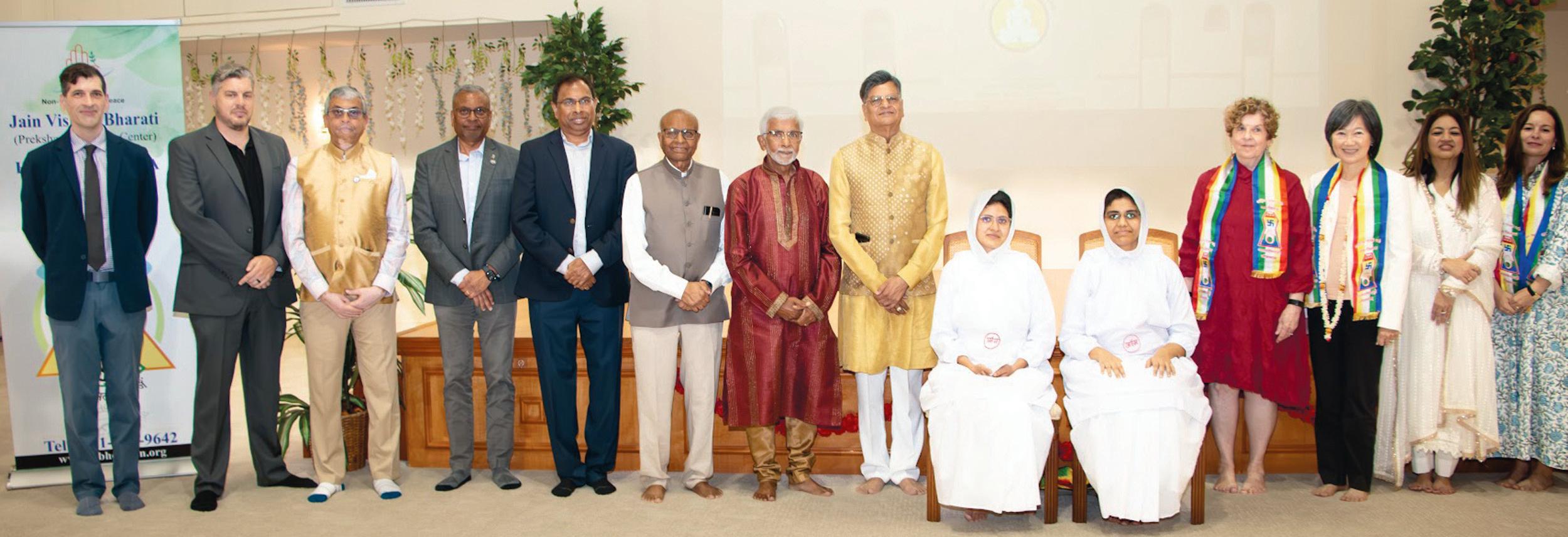
By Juhi varMa
houston: Rice University students will now have the opportunity to study Jainism for academic credit, thanks to the creation of the Tirthankar Shantinath Endowed Professorship in Jain Studies — a milestone made possible through the support of Houston’s Jain community.
The professorship, housed in Rice’s School of Humanities, will advance scholarship in Jain philosophy, ethics, and culture — one of the world’s oldest spiritual traditions rooted in nonviolence, pluralism, and compassion.
“Jain studies now have gained a secure and enduring presence,” said Swatantra Jain, chairman of Jain Vishwa Bharati Center in Houston. “This is a powerful affirmation of our shared heritage.”
To celebrate the establishment, the JVB center hosted a special event that drew more than 100 guests, including Rice faculty, community philanthropists, and civic leaders. The Consul General of India in Houston, D.C. Manjunath, attended as the guest of honor, calling the achievement a “remarkable example of cultural and educational collaboration.”
“Three months ago, we discussed the professorship in Houston — and today, here we are,” Manjunath said, commending the community’s dedication.
The endowed chair was created through a partnership between Rice University and the Federation of Jain Associations in North America (JAINA). It represents a major step forward for Jain academic presence in the United States and follows the establishment of a similar position at the University of Texas at Austin earlier this year.
Anne Chao, adjunct lecturer in the humanities and co-founder of the Houston Asian American Archive, said the professorship reflects Rice’s mission to foster intercultural understanding.
“The goal was to create a premier research hub that will gener-
ate in depth research and understanding of the peoples, religion, histories and cultures of the Asian continent, as well as those of Asian America today,” Chao said.
She said the archive was founded to be a leading research hub on Asian peoples, religions, and cultures, and the new Jain Studies program would further that goal.
Dr. Sulekh Jain, chairman of the International School of Jain Studies, expressed gratitude to Chao, noting his family’s long connection to Rice and their decade-long desire to establish a Jain studies program there.
Ten years ago, the Bhagwaan Mahavir/Chao Family Postdoctoral Fellowship in Jain Studies was created through gifts from Jain community leaders across the U.S. The fellowship, administered by Rice’s Chao Center for Asian Studies, supports research under its Transnational Asia Research Initiative.
The program’s foundation was formalized in 2016 with a memorandum of understanding signed at the Jain Society of Houston, attended by Jain community leaders and Rice representatives. Rooted in Jainism’s philosophy of nonviolence, asceticism, and pluralism (“anekantvad”), the initiative promotes deeper understanding of one of India’s oldest faith traditions alongside Hinduism.
Community and interfaith leaders also emphasized the moral and spiritual value of the initiative. Samani Aarjav Pragya of JVB Houston said--
“We are helping young minds build samyak darshan (right perception)… this is not just an academic milestone, but a moral and spiritual step forward — a place where where science meets silence, where reason meets reflection, and where intellect meets intuition.”
Sheroo Mukhtiar, CEO of Interfaith Ministries for Greater Houston, said Jain teachings hold enduring relevance:
“These principles are not only spiritual ideals but living values
that call us to service, humility, and interconnectedness,” she said.
“Every day, our staff and volunteers bring this mission to life, delivering thousands of hot meals to homebound seniors, assisting newcomers, including legal refugees and their families as they rebuild their lives, and connecting People across faith communities in service and solidarity. In many ways, our work is a reflection of what we are celebrating today.”
Philanthropist Jugal Malani praised the collaboration between Rice and Houston’s Jain community, calling the professorship the beginning of a vibrant journey.
“This is more than just a new academic position, it is a profound commitment to the study of one of the world’s oldest living traditions,
a tradition rooted in nonviolence, compassion and pursuit of truth,” Malani ji said. “By creating this professorship, Rice University affirms its dedication to global understanding and intercultural dialogue.”
The professorship honors Tirthankar Bhagwan Shantinath, the 16th of Jainism’s 24 revered spiritual teachers. Through this permanent endowment, Rice joins other major universities in expanding the field of Jain Studies and fostering greater interfaith understanding.
Kathleen Canning, dean of the School of Humanities, called the endowment transformative for the university.
“A new professorship means fostering an entirely new field of
scholarly inquiry, not yet represented at the institution,’ she said.
“It will significantly expand the scholarly scope with respect to religion, philosophy or history…
We very much look forward to the faculty search for the Jain studies professorship, and we are confident that this scholar will find an exciting and welcoming home in one of the departments.”
Over 15 years, the Houston Asian American Archive has collected more than 500 interviews with Asian Americans in the Houston area, earning multiple awards. The team invites community members to share their stories to help build a richer record of Asian American life in the region. The archive is accessible online at ContactHAAA@rice.edu


Patna: D(U) supremo Nitish Kumar was sworn-in as Bihar Chief Minister for a record 10th time on Thursday, days after the NDA secured a landslide victory in the Assembly elections. The swearing-in ceremony at Patna’s historic Gandhi Maidan was attended by Prime Minister Narendra Modi, Union Home Minister Amit Shah, and several top NDA leaders. Apart from the main stage, several pandals have also been erected to accommodate VIPs. Elaborate security arrangements have been put in place, and over 3 lakh people are anticipated at the event, a senior BJP leader said.
Presidential Reference: Supreme Court to pronounce verdict on Thursday
The Supreme Court is slated to pronounce on Thursday its verdict on the Presidential Reference, which asked if a Constitutional court can impose timelines for the President and Governors to give assent to bills passed by State legislatures. A Constitution Bench of Chief Justice B.R. Gavai and justices Surya Kant, Vikram Nath, P.S. Narasimha and A.S. Chandurkar, which heard the arguments for 10 days, reserved the verdict on September 11, 2025.
Murmu on 3-day visit to Chhattisgarh, Telangana, Andhra Pradesh
President Droupadi Murmu will be on a three-day visit to Chhattisgarh, Telangana, and Andhra Pradesh from Thursday, her office has said. Murmu will grace the Janjatiya Gaurav Diwas celebration, organised by the Chhattisgarh government at Ambikapur on Thursday, it said.
Ajit Doval to host counterparts for Colombo Security Conclave NSA Meet
National Security Advisor Ajit Doval is set to host his counterparts from the member states of the Colombo Security Conclave (CSC) in the national capital on Thursday, the Ministry of External Affairs shared in an official statement.
Australian Foreign Minister Penny Wong, Jaishankar to meet in New Delhi on Thursday
Australian Foreign Minister Penny Wong will meet External Affairs Minister S. Jaishankar in New Delhi on Thursday. Wong arrived in Delhi on Wednesday night. On Thursday, Senator Wong will meet Jaishankar at the Hyderabad House in Delhi, an advisory issued by the Ministry of External Affairs said. The Minister is scheduled to depart on Thursday night.
Why shouldn’t CBI probe, Supreme
Court asks Haryana govt in case where Delhi lawyer was arrested
The Supreme Court on Wednesday asked the Haryana government why the murder case in which a Delhi-based advocate was arrested by the Gurugram police’s Special Task Force should not be handed over to the CBI. On November 12, 2025, a bench headed by Chief Justice B.R. Gavai ordered the immediate release of advocate Vikram Singh in the case. The apex court has sought response of the Haryana Police by Thursday.
Nikhat, Jaismine and four other Indian boxers march into finals
Two-time World Champion Nikhat Zareen battled through a scrappy bout to storm into the gold medal round, joining Jaismine Lamboria and four other home boxers who also cruised to the finals on day four of the World Boxing Cup Finals in Greater Noida on Wednesday. Jadumani Singh Mandengbam (50kg), Pawan Bartwal (55kg), Sachin Siwach (60kg) and Hitesh Gulia (70kg) also entered the finals, ensuring India will have a whopping 15 boxers vying for gold on Thursday.
Deaflympics: Abhinav, Pranjali win air pistol mixed team gold
Abhinav Deshwal and Pranjali Prashant Dhumal clinched the gold medal in the 10m Air Pistol event, while Kushagra Singh Rajawat won bronze in the 50m Rifle Prone competition as Indian shooters continued their fine run at the 25th Deaflympics in Tokyo on Wednesday. The Indian shooters have won a total of 11 medals so far in the competition. Mahit Sandhu and Natasha Joshi will be in action on Thursday in 50m 3 Positions women’s event.
Rupee falls 23 paise to close at 88.71 against U.S. dollar
The rupee depreciated 23 paise to close at 88.71 (provisional) against the U.S. dollar on Thursday (November 20, 2025), on broad strength of the American currency and fading odds of a rate cut by the U.S. Federal Reserve.
Forex traders said the dollar has staged a rally, moving above the 100 level, after the U.S. Federal Reserve minutes indicated that most officials were opposed to a rate cut in December, following the October cut.
At the interbank foreign exchange market, the rupee opened at 88.63, then lost ground, touching an intra-day low of 88.74. It also hit an intra-day high of 88.62 against the U.S. dollar.
The local currency finally settled for the day at 88.71 (provisional) against the greenback, down 23 paise from its previous close.


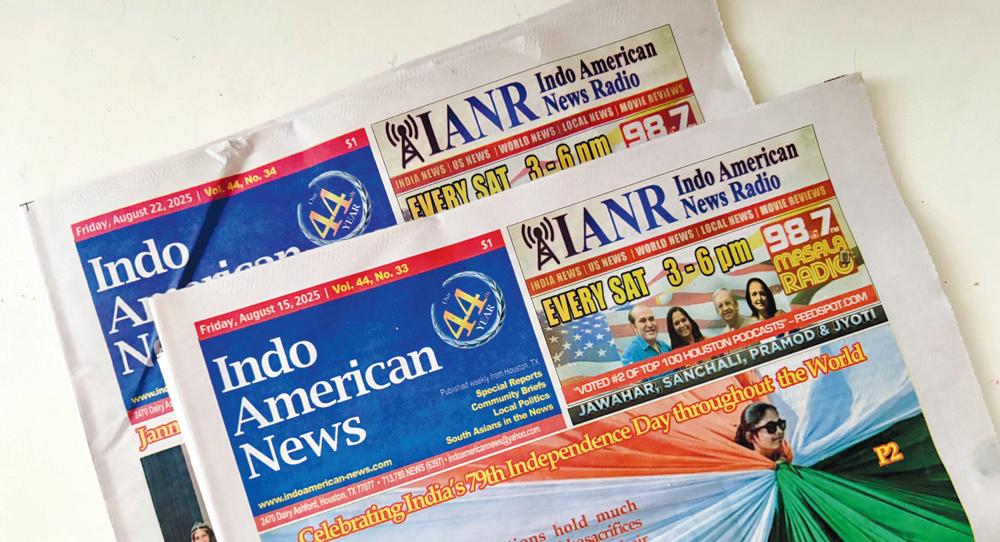
By shashisheKhar gavai
MuMBai: It is risky business these days in our country that is Bharat to disclose one’s preferences for one kind of sustenance or the other – at best you may be denied membership of a housing society and at worst you could be butchered for transporting what is suspected to be the wrong kind of animal protein. And somewhere in the middle your good friend, who has been a carnivore for close to 4 decades but has now seen the light, may harangue you on the horrors of non vegetarianism. His is the zeal of the convert, the proverbial cat on a pilgrimage after gobbling up a hundred mice.
This dietary intolerance has made it difficult to sample some of the culinary delights of Mumbai where I live. Over the years I have come to relish the crispy mutton samosa served mainly in minority-owned establishments. Today it has disappeared from the menu of many of them and has been replaced by the feeble chicken samosa. The owner of one such restaurant admitted hesitatingly that he had stopped making the mutton samosa because he was afraid that the filling may be mistaken for the wrong kind of meat landing him in serious trouble. So much for the fundamental right to eat what one wishes to eat which is so dear to the gastronome.
I must confess that I wasn’t born a gastronome(I dare not use the term ‘gourmand’ given my modest appetite – the spirit being willing but the flesh being weak). Until my early teens my experience of food was largely limited to the staid fare of dal, roti, sabzi and mutton curry(for Sunday lunch). It took a few years for my mother to discover her culinary talent and that opened up for the family the brave new world of pasta, shepherd pie, hamburgers and several vegetarian delicacies. All these recipes she wrote down very assiduously for the benefit of posterity. The moderate quantum of servings on the table however, scarcely matched our appetites, obliging my kid brother and I to keep a vigilalent eye on each other to ensure that not an extra spoonful was had by the adversary.
The realisation that quality beats quantity dawned over me one day when I was home from college on vacation. The virtually inedible food that is served in most college hostels turns their inmates into voracious predators and I was no exception. Mother had made a huge quantity of vada sambar, a substantial portion of which I devoured in one sitting as if there was no tomorrow and with complete disregard for my poor stomach which lodged a strong protest with my palate. For several years after I suffered from the ‘vada
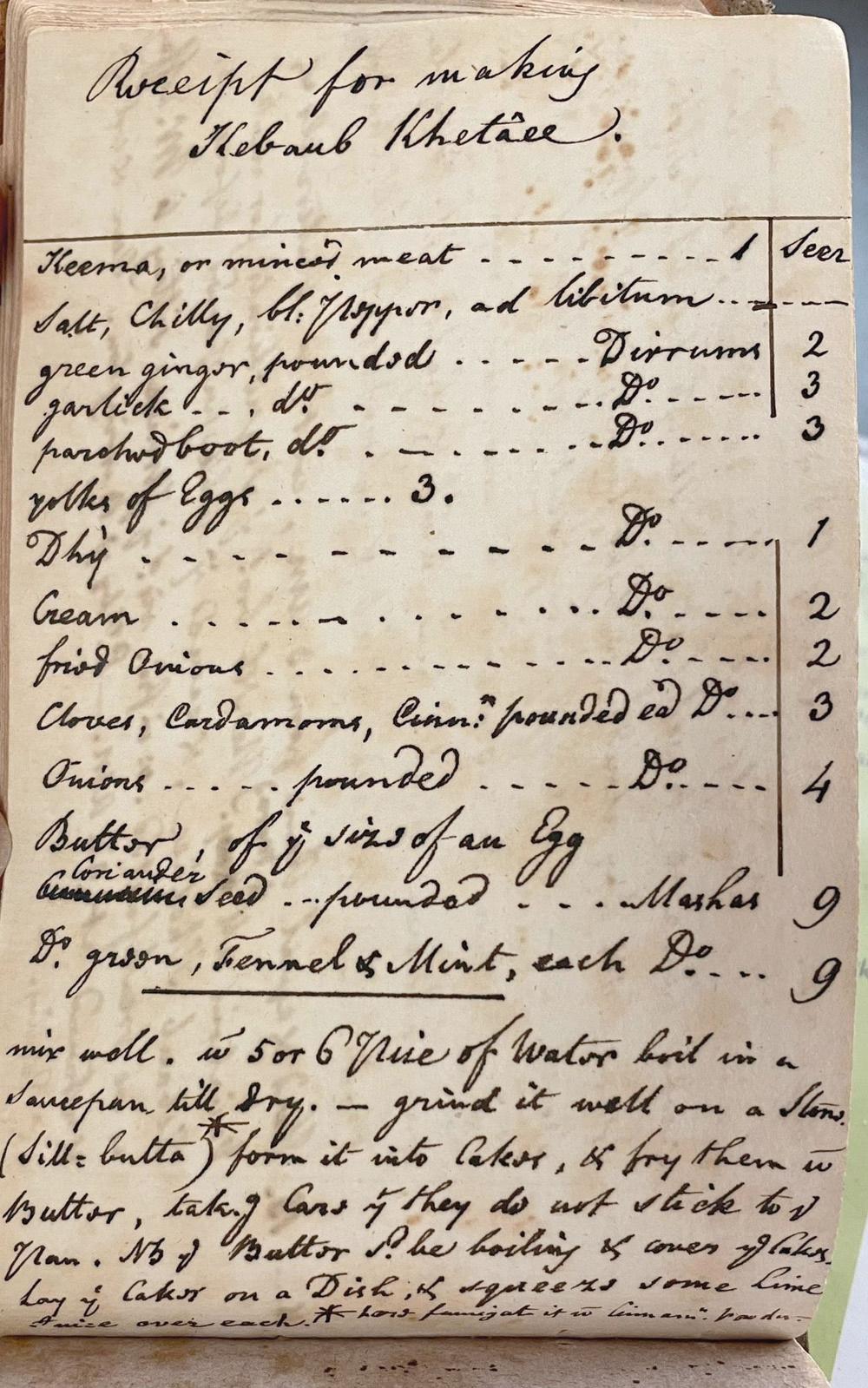
sambhar syndrome’, meaning I couldn’t look at a vada in its eye without feeling sick.
A fresh chapter in my gastronomic journey opened in the mid 70s in Delhi where I was a foreign service trainee officer. The restaurants on Pandara Road and the dhabas in the outer circle of Connaught Place introduced me to the pleasures of butter chicken and other goodies. It was also the 70s which took me on my first posting abroad to the former Yugoslavia (it subsequently broke up into seven countries ….no fault of mine of course). Those were the days when vegetarianism outside of India was either a fad or was unheard of and a couple of my strictly herbivorous service batchmates were reported to be close to starvation in the capitals they served (but they mercifully survived and by all accounts are quite hale and hearty now).
Restaurants in Yugoslavia had beef this, pork that, chicken this and that, fish so on and so forth, but a vegetarian could at best have bread, butter and salad. The “veg-
the cat brought in and tasted similar. The Scots though more than made up for it by dazzling (and sozzling) the world with scotch whisky(although if reports are to be believed more of the stuff is produced in India than the place of its origin).
etable” soup he could only order at his own peril as it was prepared in a beef stock. In one of her letters( no email or internet calls in those ancient times…) Mother anxiously enquired if I was consuming bovines so sacred to us. Instead of a direct answer I responded rather facetiously that the Yugoslav cow was a different kettle of fish altogether and had not attained any level of sanctity whatsoever.
From Yugoslavia my diplomatic career took me to several countries. German food was a lot of sausage – bratwurst, bockwurst, bregenwurst, rindswurst, even currywurst(perhaps to make the Indian expat feel at home).It was truly a Wurst case scenario(if you pardon the pun), because there’s only so much sausage that you can eat. British food of course is famous as a culinary disaster. Scotland where I served, prided itself on its haggis, its traditional national dish which is sheep’s offal boiled with oatmeal and stuffed in the same animal’s stomach. To me it looked like something that
The Scots also have their salmon and trout aplenty, the latter being introduced by the Brits in the cold rivers of Kashmir and Himachal in the 19th century. So avoiding haggis entirely I consumed a lot of these species of fish, almost to the point of falling victim to my ‘vada sambhar syndrome’. South of Scotland lies what nationalistic Scots refer to as the ‘Auld Enemy’, meaning of course England. They do have some decent pies and cakes but overall the traditional English stuff as I discovered was best avoided. Even after ruling over India for a 150 years all they could bring back from the incredibly rich variety of our cuisine was a bastardised version of good old ‘rasam’, the mulligatawny soup. Nor did they leave much of a culinary legacy behind. However, the post colonial period did bring about the realisation that tandoori chicken and masala dosa are vastly superior to roast beef and Yorkshire pudding so the English then concocted the chicken tikka masala and declared it as their national dish. But in the typical British culinary tradition they have messed this up too. What you have essentially is chicken boiled in a sweet tomato sauce. Lamentably our present day Mir Jafars have slavishly adopted this abomination and pass it off as butter chicken in Pandara Road and most other places, as I discovered to my utter horror some time ago. There should be a law against such atrocities !!! That being said there were some honourable exceptions to the unrefined British tastebuds. Warren Hastings, the first governor general of India, was apparently a fan of Indian food. A recipe for ‘kebaub khataee’, obtained from the Nawab of Lucknow and written in his own hand in his private diary, exists in the British Library.
Unlike the Brits some colonial powers have indeed left their epicurean mark on former colonies. The influence of Turkish cuisine is
evident even today in the former Ottoman Empire – from the Balkans, through Greece, the Middle East into Central Asia. During a visit to Turkey I tried one of their desserts -Irmik Helvasi which was almost exactly like our Sooji Halva and made from the same ingredients (It was perhaps introduced in India during the Delhi Sultanate period as the rulers were of Turkish origin). In Vietnam, Cambodia and Laos I have eaten exquisite french breads and pastries from local patisseries and have sampled ‘haute cuisine’ in restaurants. Some like the Dutch had nothing to offer to their subjects in terms of fine dining. But as I learnt in Indonesia they took some of the best native dishes and created a ‘thali’ – the Rijsstafel or rice table and took it home to Holland. I just read a news item which claims that sweat-infused rice balls shaped in the armpits of young women have become a culinary hit in Japan and are being sold at ten times the price of their traditional version ‘onigiri’. If this sweaty delicacy does achieve international popularity, I fear the deodorant industry may be in serious trouble. This is indeed extreme cuisine and brings to mind ‘Bizarre Foods’ a popular TV show hosted by Chef Andrew Zimmern . I was an avid viewer and watched with a mixture of awe and revulsion as the man nonchalantly devoured scorpions, tarantulas, maggots and rotten fish. Morbid curiosity indeed! I can never hope to match the gastronomic gumption of Zimmern but I too have partaken of stuff that would set a vegetarian stomach churning and may even cause a flutter in the average non – vegetarian belly. In addition to the inedible haggis, I have sampled at different times and in various corners of the world, durian( the South East Asian fruit which stinks to the high heavens); frogs legs and snails ( great delicacies in France ); tartar steak ( finely minced raw meat which must have been greatly fancied by our Stone Age ancestors before they discovered fire ); and crocodile tail ( which tasted like rubbery chicken). I know for sure that I will never be able to eat scorpion, tarantula, maggot, rotten fish and other exotic species that Andrew Zimmern consumes with such elan. We all have our limits , the red line that cannot be crossed. Even Chef Zimmern does ! He just cannot bring himself to eat , believe it or not , walnuts and oatmeal. Now ain’t that just cute! Shashishekhar Gavai is an Indian diplomat, whose foreign service posts included serving as the High Commissioner to Canada and Consul General in Houston (2005 to 2008). Retired in Mumbai, Gavai enjoys traveling and writing about unique locale and gastronomic adventures.
By saatwiK Bhatt
staFFord: The All India Movement for Seva (AIM for Seva), now celebrating 25 years of service to tribal and rural India, reaffirmed its mission to expand access to education and healthcare for underserved children. On Friday, November 14, the organization’s Houston Chapter hosted a special donor appreciation event at the Stafford Centre, drawing more than 300 attendees for a live concert titled Hé Govind.
An ode to Lord Krishna, Hé Govind offered audiences a deeply immersive musical experience. The production featured compositions by revered saints and seers of India, including AIM for Seva founder Swami Dayananda Saraswati.
The performance brought together renowned artists such as Jayateerth Mevundi (vocals), Pravin Godkhindi (flute), Narendra Nayak (harmonium), Rajendra Nakod (tabla), Sukhad Munde (pakhawaj), and Suryakant Surve (side rhythm), whose collective artistry transported listeners into the dive realm of Lord Krishna himself.
AIM for Seva aims to bring value-based education and quality health care to the children of rural India. Founded by Swami Dayananda Saraswati, a world-


renowned spiritual leader and thinker. We as an charitable organization are focused on transforming the lives of children in rural India through its chatralaya, or free student homes, which provide a loving, nurturing environment and access to value-based education, quality health care, and life-en-
riching cultural, spiritual and recreational programming. AIM for Seva currently has 95 chatralayas serving 4,000 students, reaching 17 states across India.
The evening began with refreshments and hospitality for donors, followed by a 6:30 p.m. invocation of Dayananda Panchakam.
Students trained by Houston-based Carnatic teachers Smt. Shraddha Mohan and Madhura Sankar presented the curtain-raiser. Program emcee Smt. Sujatha Sitaraman then welcomed Mrs. Anju Malik, Consul at the Consulate General of India in Houston, who spoke briefly about AIM for Seva’s mis-
sion.
Next Saatwik Bhatt, a member of AIM for Seva’s flagship Global Youth Leadership Program (GYLP). GYLP participants travel to rural India, stay in the villages, teach/learn with children from grades 6 to 9 in a rural school, experience and appreciate each others’ opportunities to give and receive, and eventually become contributing members of society. His heartfelt speech deeply resonated with the donors and audience, stirring their emotions.
After all that, the concert began in earnest. Constructing an ethereal blend of soul-stirring vocals and divine bansuri melodies, the artists performed fantastic compositions such as Bho Shambho and Ramam Bhaje. The artists delivered several captivating jugalbandhi sequences between pakhawaj, tabla, and flute.
Each musician contributed a distinct texture to the performance, such as Suryakant Surve, whose instrumentation and rhythmic prowess added a dynamic new dimension. The audience described the evening as mesmerizing and transformative. Finally, the unforgettable evening concluded with a vote of thanks by Mona Desai and dinner.
Continued on Page 10
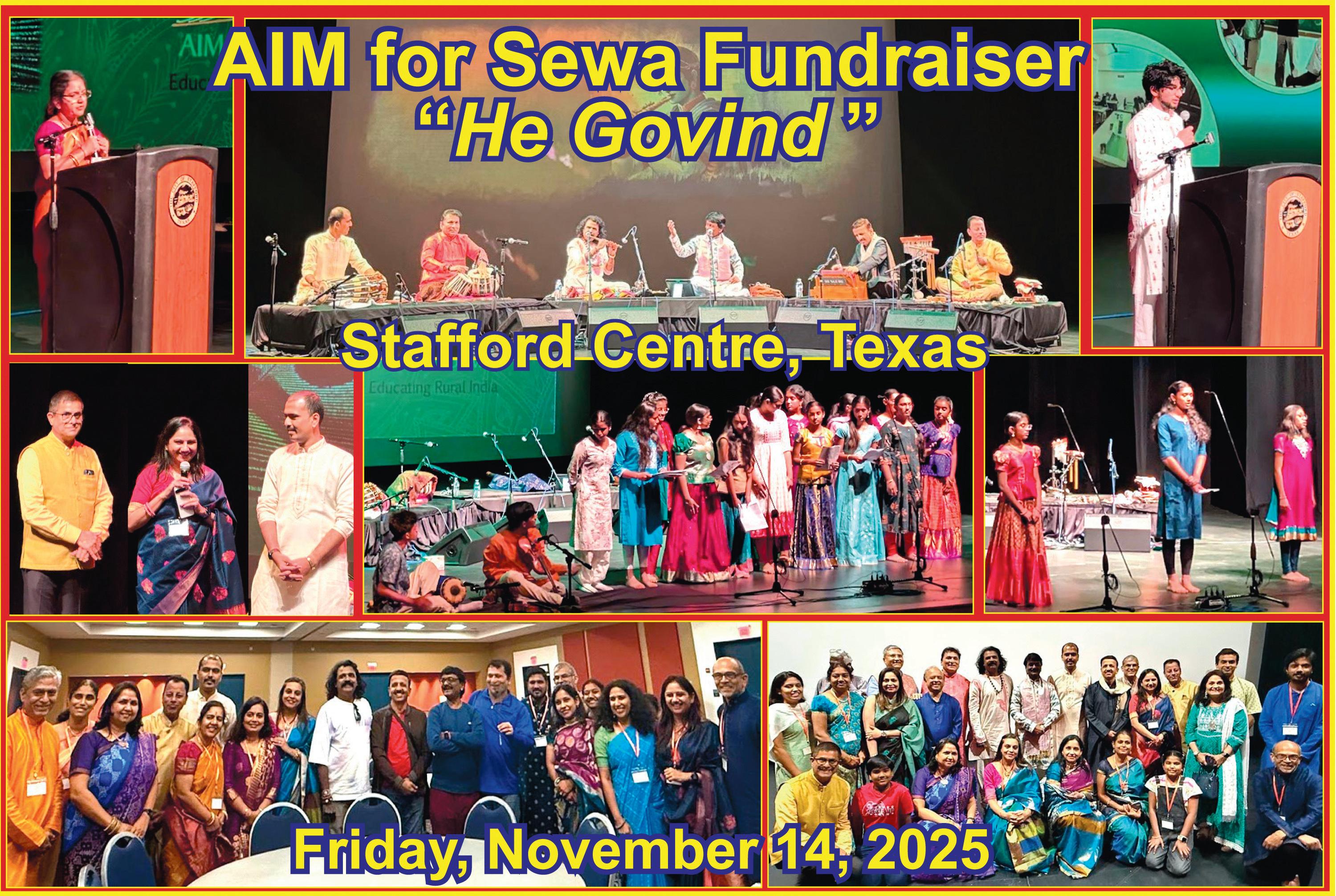
November 21, 2025
ahMedaBad: Gujarati cinema marks another big victory this year, after the success of ‘Vash: Level 2’, as Yash Soni’s ‘Chaniya Toli’ completes 30 days in theatres with an impressive worldwide total of Rs 21.37 crore. The film which is directed by Jay Bodas and Parth Trivedi, has received good reviews from the audiences and all thanks to its entertaining blend of action, comedy and crime.
Released on 21 October 2025, the film has maintained its momentum long after its opening week,.According to figures reported by the Sacnilk website, the film has collected Rs 18.08 crore India net, with the India gross amount matching the worldwide total.
Reportedly on Day 30, ‘Chaniya Toli’ recorded Rs 4 lakhs and the weekend-to-weekday fluctuations remain mild, with Day 29 bringing in Rs 6 lakhs, Day 28 at Rs 4 lakhs and Day 27 touching Rs 13 lakhs.
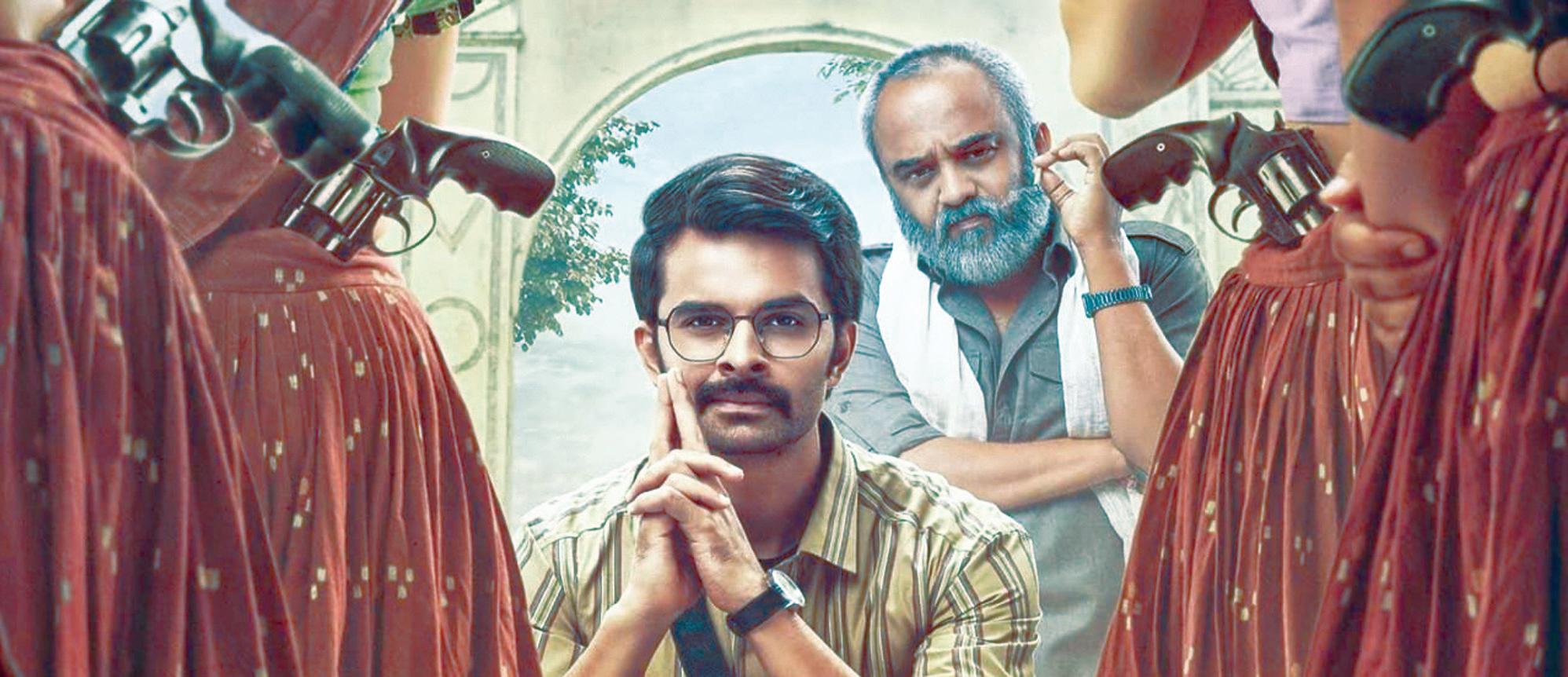
The film features a vibrant set of performances led by Yash Soni, accompanied by Chetan Daiya, Maulik Nayak, Netri Trivedi and Heena Varde. The screenplay and story, crafted by Jay Bodas, Parth Trivedi and Pratiksinh Chavda, deliver a mix of humour and suspense that has kept audiences engaged.
A social media review reads, “Its wholesome entertainment and hilariously funny we couldn’t contain our laughter at all Everyone who acted in the movie delivered a commendable performance.” Another one wrote, “Excellent writing, gripping comedy drama, you will enjoy it definitely. Cast selection is awesome. Movie is short some how but you will definitely get your all question’s answer. Gujarati movies are always awesome.”
Released on the post-Diwali day (October 21), the movie is witnessing a superb box office run. It began its theatrical run with Rs. 1.40 crore and since then, has maintained an upward trend over the long weekend. It held strong on the weekdays, proving how good content always found its audience. The movie collected Rs. 80 lakh on its second Thursday, dropping by 48 percent from the previous Thursday.
Diwali is traditionally one of the most lucrative release periods in Gujarat, thanks to the extended holiday stretch of five to six days. However, this window is usually dominated by major Hindi releases, prompting most Gujarati filmmakers to steer clear. Chaniya Toli boldly broke that norm, and it paid off. On its first day, the film collected about one-third of what Hindi film Thamma did, but by the end of the weekend, it had caught up in daily collections and is now performing well ahead of it. -- ToI
Continued from Paage 9
The event’s success was made possible by the AIM for Seva Houston Chapter, led by Mona Desai along with more than 30 dedicated volunteers. Most importantly, the generous contributions from audience donors will support 150 children in rural India, providing education, meals, uniforms, healthcare, and a holistic living environment. Many chapters began modestly, but have since grown into major cultural and philanthropic hubs.
At the heart of AIM for Seva is a simple but powerful truth often emphasized by Swami Dayananda Saraswati, “Only by giving do you become a giver, a contributor. You become big by just using the will; action is the key.” As the Houston Chapter continues its journey, it remains rooted in this philosophy. With expanding support, a growing volunteer base, and a renewed commitment to the children of rural India, the chapter looks ahead to reach new heights in the years to come.

By arChiKa Khurana
Story: This time, middle-aged Ashish meets the family of Ayesha, the woman he loves, and who is half his age. Can love bridge the gap between generations, or will it end in heartbreak?
Review: The sequel to De De Pyaar De revisits its familiar theme — love across generations — but this time from the opposite end of the spectrum.
After seeking validation from his estranged wife (Tabu) and family, middle-aged Ashish Mehra (Ajay Devgn) must now win over the parents of his much younger girlfriend, Ayesha (Rakul Preet Singh). The twist lies in the irony: Ayesha’s parents, Rakesh and Anju (R. Madhavan and Gautami Kapoor), are nearly Ashish’s age, setting the stage for a fresh round of awkward humour, emotional tension, and social commentar
The film’s first half plays out with a breezy charm, echoing the tone of the 2019 original. Ayesha’s family believes they are modern and progressive — “age is just a number,” they claim — until confronted with the reality of their daughter’s middle-aged suitor. These moments of hypocrisy and generational discomfort are where the film finds its sharpest humour. The writing, by Luv Ranjan and Tarun Jain, works best when it relies on situational comedy rather than the easy route of slapstick jokes.
Ajay Devgn delivers a self-aware and effortlessly cool performance. He embraces the jokes about his age, turning them into a source of humour and humility. Even when called buddha or uncle repeatedly, Devgn wears it like a badge of honour, reminding the audience why he still commands screen presence. Rakul Preet Singh brings energy and confidence, complementing Devgn’s understated charm. However, their spark is dimmer this time, perhaps because the writing doesn’t give their rela-

tionship enough emotional depth. R. Madhavan, as Ayesha’s father, is perfectly cast. His understated performance lends weight and warmth to the narrative, while his scenes with Devgn add emotional grounding to the otherwise frothy narrative. Gautami Kapoor, as the composed and supportive mother, adds grace, even if her role is underwritten. Ishita Dutta, playing Ayesha’s outspoken bhabhi, brings energy but occasionally slips into loudness. Meezaan Jafri’s cameo as the “ideal match” for Ayesha injects humour and nostalgia, especially with his recreation of Devgn’s iconic Phool Aur Kaante split-entry — a cheeky nod that earns a few whistles.
Javed Jafferi, as Ashish’s therapist and confidant, steals every scene he’s in with impeccable comic timing. Director Anshul Sharma keeps the tone breezy and engaging, relying on situational humour and family dynamics rather than moralising.
However, DDPD2 often drifts, losing pace and purpose as it juggles between comedy, emotion, and social commentary. The uneven tone and sluggish stretches dilute its impact, even though flashes of wit and warmth shine through. Sharma manages to wrap it up on a grounded, feel-good note, but the film never quite finds the emotional depth or sharpness it aims for. Musically, the film hits the right notes. Tracks like 3 Shaukk (a peppy rework of Karan Aujla’s White Brown Black) and Jhoom Sharaabi (Yo Yo Honey Singh’s energetic spin on Azim Naza’s qawwali) are catchy and well-placed.
De De Pyaar De 2 doesn’t reinvent the formula — it merely updates it with wit, charm, and maturity. Despite its uneven tone and missing spark, the film remains an enjoyable, light-hearted sequel that reminds us love can defy age, but not always logic. -- ToI


Place a number in the empty boxes in such a way that each row across, each column down and each 9-box square contains all of the numbers from one to nine.
Send us the correct answer before November 25, 2025. Email us at indoamericannews@yahoo.com. Please send us your solved Sudoku for your name to be published.


Kumud Athavale, Sanchali Basu, Krishna R. Vuddagiri, Prabha Barvalia, Jawahar Khandheria, Mohit Mittal, Prabha Narumanchi, Anil Bhagtaney, Arup Gupta, Yudhveer Bagga, Hanumant Todgal, Naveen Garg, Bhumija Mittal, Murthy Mudigonda, Romy Mukhi, Taranjit Singh

